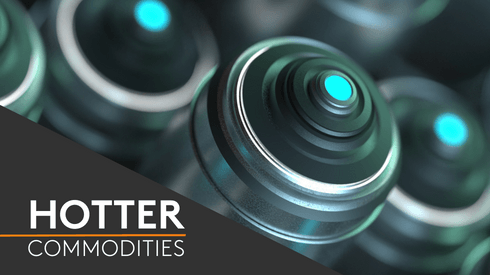Kallevik assumed the position of Hydro’s new president and CEO on May 13 and launched his agenda to accelerate the company’s strategy of “pioneering the green aluminium transition, powered by renewable energy towards 2030.”
“We have three major projects in the works,” Kallevik said.
The first is the development of a new technology, HalZero, that aims to fully decarbonize the smelting of aluminium by eliminating emissions from both electrolysis and anode baking processes.
“Any new technology takes time. HalZero is producing in lab scale. We are in the middle of construction for Stage 2, and we are already engineering Stage 3,” he said.
The process chlorinates alumina, producing carbon dioxide, which is kept in the loop. The oxygen molecule is then taken out of carbon dioxide and released while carbon is kept in the system.
Hydro expects large scale production of HalZero
“The only emission is oxygen,” Kallevik said, adding that the company expects industrial scale production of HalZero around 2030.
The new technology will not only replace the current carbon anodes but will need to be applied to the whole smelter system.
“The new technology can be used only when you plan to build a new plant,” he said.
For its second major decarbonization project, Hydro is working on a carbon capture and storage system for the existing plants where HalZero cannot be applied.
“The only way you can make sure your existing smelters can be carbon neutral [is using a carbon capture and storage system,]” Kallevik said.
The third project is increasing Hydro’s use of end-of-life scrap, and as a part of this they have completed the building of the Cassopolis plant in the later part of 2023 and have announced a new recycling plant in Torija, Spain in February, according to Kallevik.
Using end-of-life scrap reduces the finished product’s embedded carbon dioxide footprint and is important from an energy and environmental perspective as it uses a lot less energy and not having to do mining reduces the product’s carbon footprint, Kallevik said.
“You still need some primary aluminium [in the finished product] to make up for increased demand but we make sure that the primary aluminium we use is manufactured in a green way,” he said.
The company is working to expand their recycling capacity in the US but currently does not plan to establish a primary smelter in the country due to limited renewable power availability.
“The new technology needs to be paired with renewable energy or carbon free production. We first need to see how to go forward: how to apply renewable energy, carbon capture, the HalZero technology,” he said.
New US office
Kallevik was in Washington DC on Tuesday to open Hydro’s new public affairs office that “will support Hydro’s ambitions to accelerate growth, value creation and sustainability as well as support the green transition in the US market.”
“The American industrial value chains are essential for the green transition in the US, and Hydro has approximately 7,000 employees and 28 production sites for aluminum recycling and production of high-quality aluminum products in North America,” Kallevik said during the opening event.
Hydro is the largest producer of aluminum extrusion ingot in the US with a production capacity of over 1 million tonnes per year, and the largest aluminum extrusion company in the country. It counts customers in automotive, buildings, general engineering and consumer durables sectors.
“There is an overall growth in the American aluminum market, but specifically our extrusion plants are feeling the market demand particularly in emerging sectors such as [electric vehicles] and renewable energy,” Kallevik said.
Whether you are a buyer or seller of base metals products, it’s important to keep track of the forces impacting market conditions and price movements. Fastmarkets’ base metals price forecasts and analysis can help you easily break down complex market conditions to understand the forces influencing price volatility – and act with confidence. Download a free sample of our base metals forecast today.






